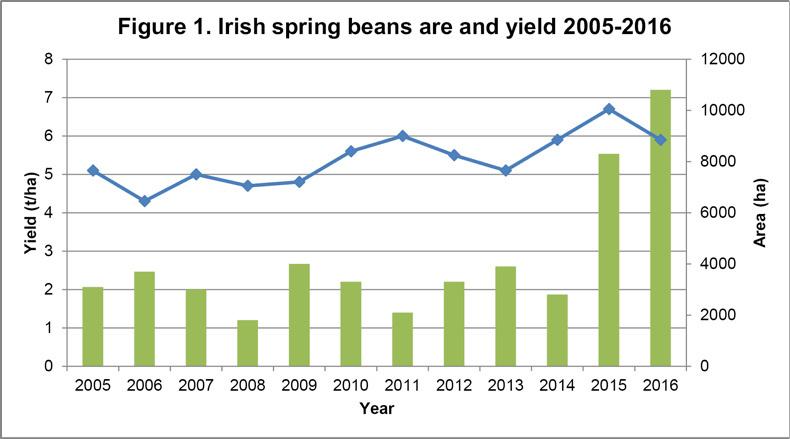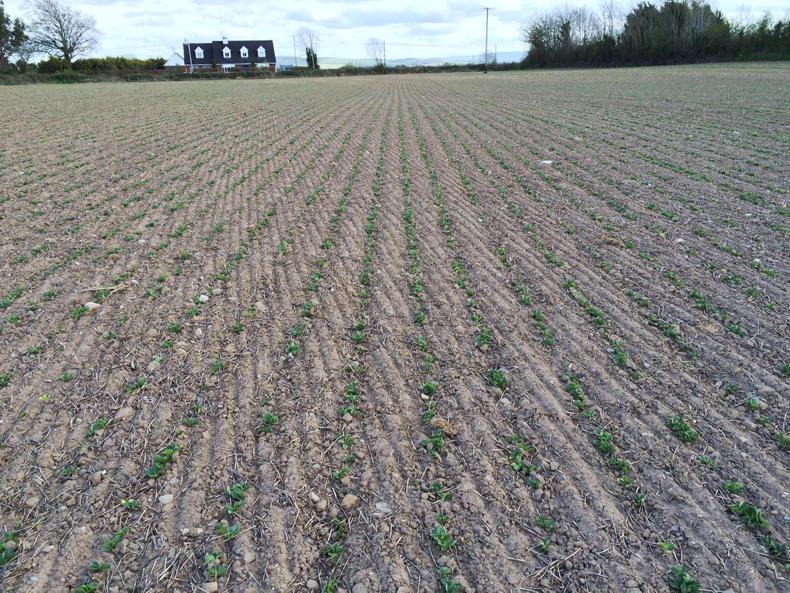As the spring drilling season approaches, growers are fine-tuning seed and input plans. A little forward planning now will help prevent costly mistakes that cannot be corrected by a spray or a bag of compound after the crop is sown. This is especially important as more beans appear in rotations and the planted area increases.
The Protein Crop Scheme introduced by the Department is an excellent example of Government action to stimulate enterprise. Production has increased substantially and beans are now a first-choice option for growers.
Field selection
So, what should growers be aware of now to improve yield potential before drilling a crop? There are many things that should be considered prior to planting.
Beans do not like compacted soils (40% yield reduction) so such situations must be avoided. Deep loosening can only be effective when conditions are dry, so field choice is the most practical solution.
Soil fertility is important and Teagasc research has shown that bean yield suffers when sown in low phosphorous and low pH soils. It is preferable that beans should not be grown in low-fertility sites but, where there is no choice, ensure that lime is tilled in before drilling and place P fertiliser near the seed.
Beans can be established in many ways from non-inversion strip-till to conventional plough/till/sow. Fertility should affect choice.
Bean weevil is a small insect that produces characteristic U-shaped notches on young bean leaves. The adult eats notches on leaf edges but the larvae cause much more damage by destroying nitrogen fixing nodules on the bean roots.
Control depends on disrupting adult feeding and egg laying. This is done by applying an approved insecticide once leaf notching is seen across the field. Bean weevils generally live in hedges and migrate out when air temperatures exceed 15°C. Be wary of fields close to where peas or beans were grown in the past as there may be high populations of weevils surviving in these hedges.
Pheromone traps can be placed along hedgerows to give an indication of adult numbers and migration. Seedtech will be monitoring weevil activity in crops in 2017 – follow us on Twitter to be in with a chance to win a pheromone trap.
Seed management
Seed can be the source of many damaging diseases of beans. Certified seed will be free from diseases such as Ascochyta and pests like stem nematode. It is critical to have home-saved seed adequately tested for these problems.
Variations in thousand seed weight must be considered when targeting the establishment of 30 plants/m2. Seeding rate mistakes can be expensive. Seed rates for Seedtech varieties are about 250kg/ha (16st/ac) for 2017.
Ascochyta is preventable by using disease-free seed and good rotations. Volunteer beans will frequently display characteristic symptoms on leaves and stems. Disease spores can travel over 100m, hence the low seed threshold.
Ascochyta control is rarely warranted in spring beans, but it can be in autumn-drilled crops. Irish certified seed is free from Ascochyta but home-saved beans should be tested. Yield losses can be significant where seed is infected.
Downy mildew is generally first seen where beans are grown in tight rotations but all crops are at risk in warm humid weather. Its symptoms are similar to potato blight, with a brown-grey growth on the underside of leaves. It can be difficult to detect early in its life cycle.
Varietal resistance is important as fungicide thresholds are not well developed and fungicide options are limited. Fanfare has the highest resistance score on the DAFM list 2017.
Stem nematode is a microscopic worm (nematode) that is set to become a more important pest of beans as area increases and rotation tightens. Symptoms include stunted and twisted stems, with a brown or rust colour on leaves and stems.
Losses can be severe (up to 50%) so every effort should be made to keep this pest out of Irish bean crops. Stem nematodes can survive seed drying and can live in soil for 10 years. Every effort should be made to prevent clean land from becoming infected. Certified seed is tested by DAFM to be free from nematodes.







 This is a subscriber-only article
This is a subscriber-only article










SHARING OPTIONS: